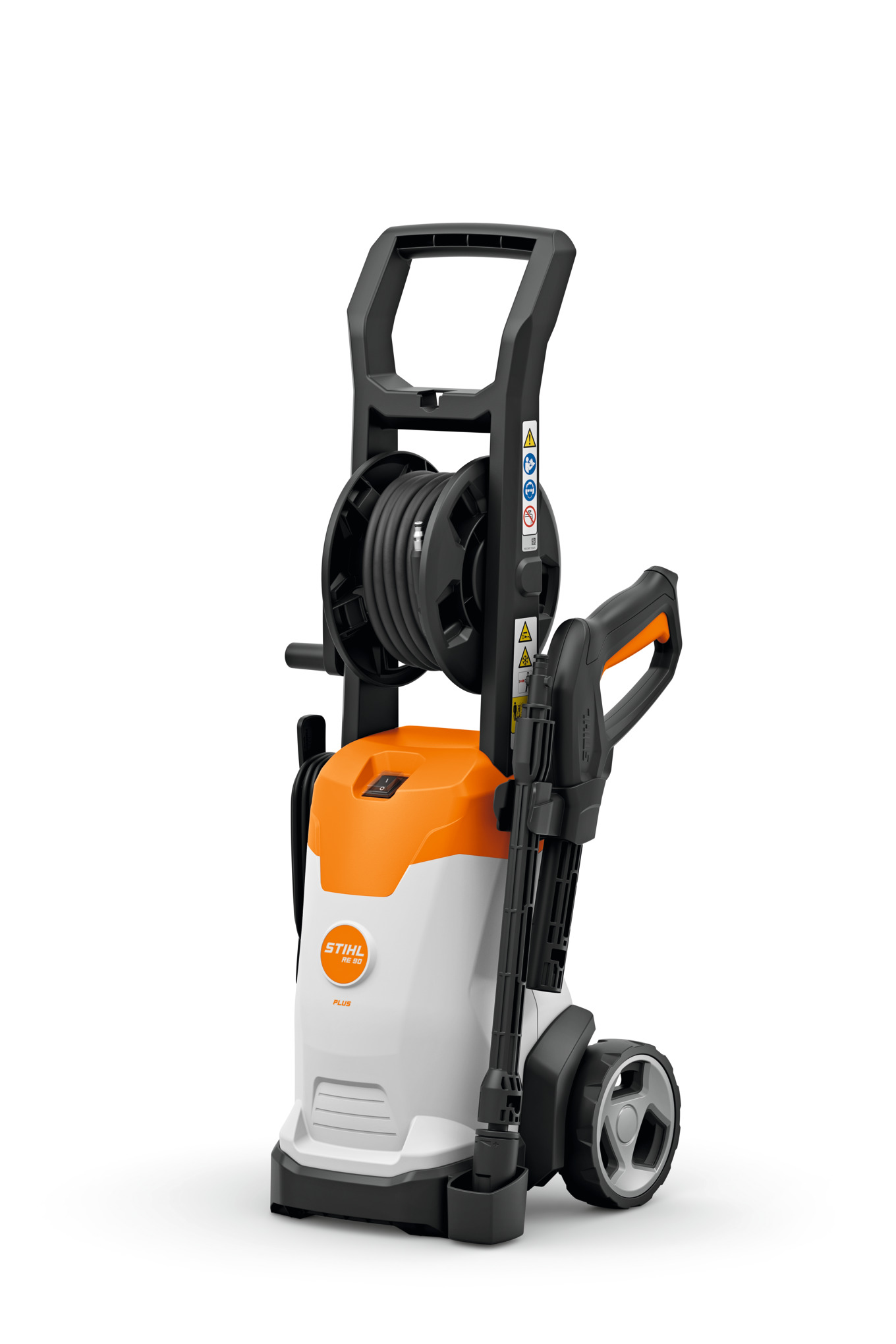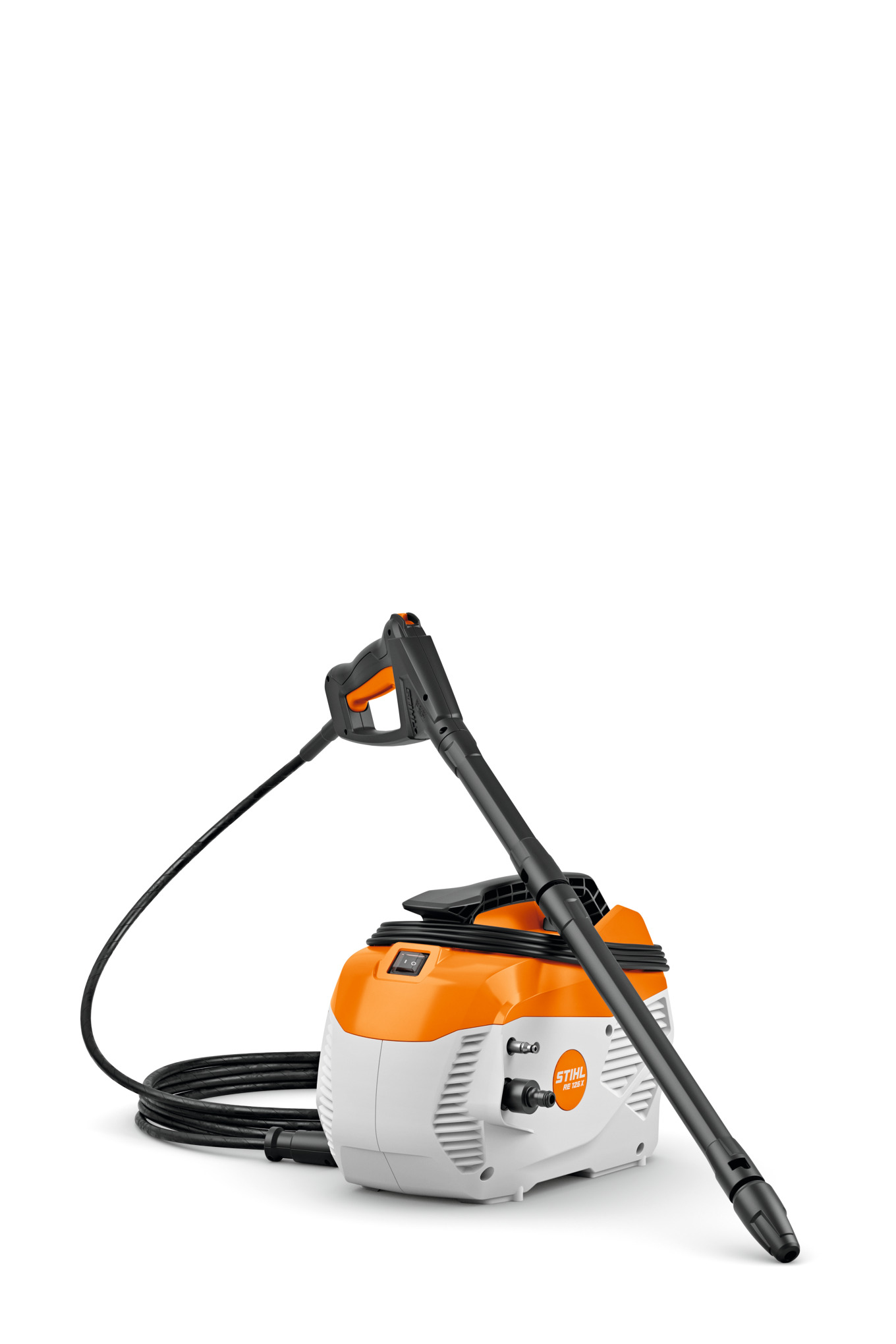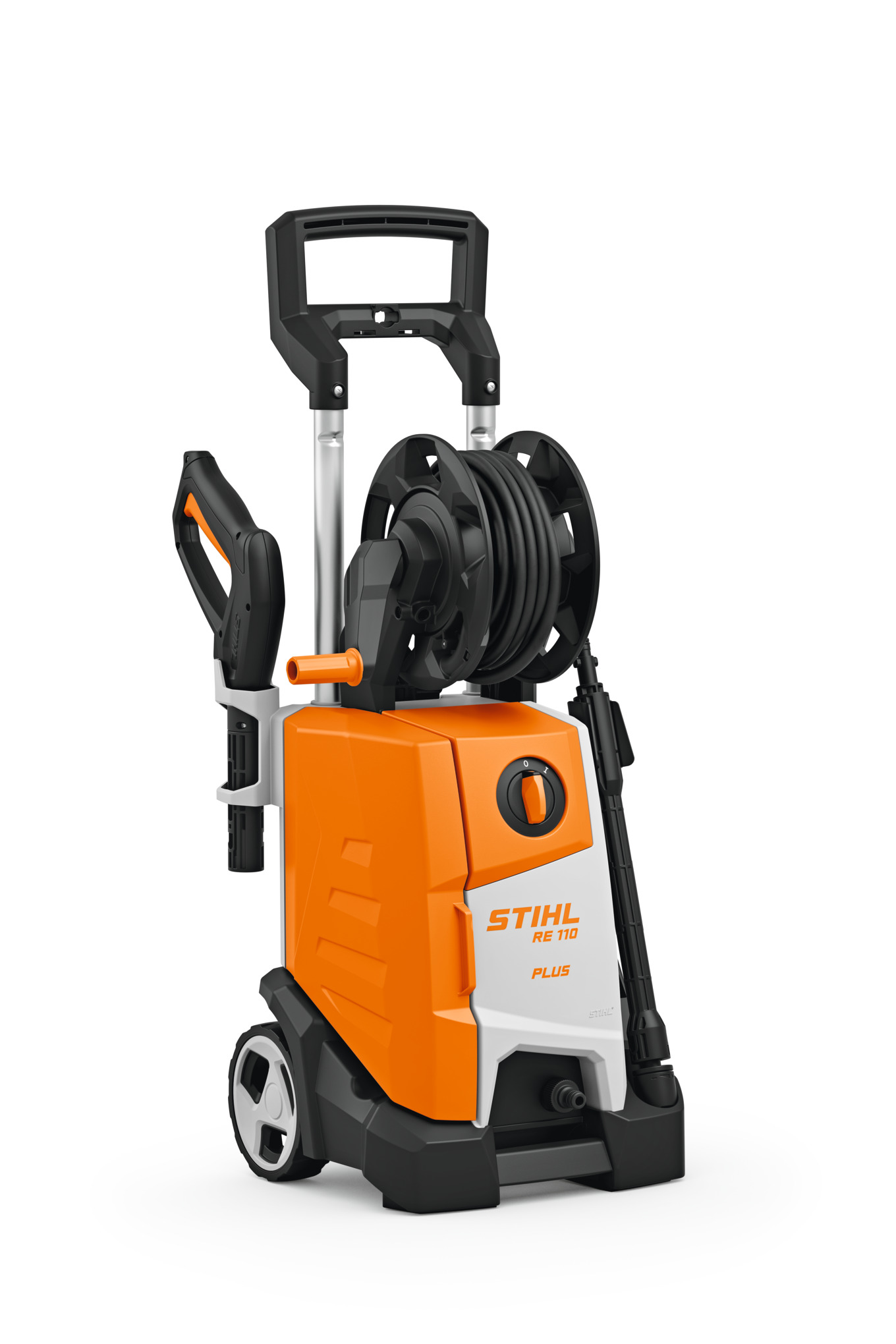How to Use and Connect a High Pressure Washer Correctly
Want to know how to use a pressure washer and connect it to a water source correctly? Here’s the best way to do it.
10.06.2025

Overview: How to use a high pressure washer
High pressure washers are suitable for a wide range of cleaning purposes.
Suitable accessories ensure optimum results.
Use a water filter to ensure the longevity of the high pressure washer.
Always use the high pressure washer carefully; start with low pressure and only increase it if necessary.
How to connect a high pressure washer depends on the water source. A garden hose is often used. If you want to use rainwater, suitable accessories such as the STIHL suction kit are available. We recommend always using a water filter to protect the high pressure washer from damage.
Yes, a high pressure washer can suck up water, but it should not do be used to do so permanently. Also note that the maximum pumping height for STIHL high pressure washers is around 100 centimetres.
A high pressure washer can be connected to different water sources including taps, but also garden pumps and unpressurised rainwater sources such as a water butt or pond.
When working with the high pressure washer, we recommend first checking on an inconspicuous area whether the surface to be cleaned is suitable for use with a high pressure washer. Start at a greater distance and proceed with caution. Increase the pressure by moving the nozzle closer to the surface.

How to use your high pressure washer correctly and what it can clean?
A high pressure washer is ideal for numerous cleaning tasks around the home and garden. Even stubborn dirt can be loosened and removed with high water pressure.
For example, if you want to clean your garden furniture or remedy the effects of weather on your house, a high pressure washer is the go-to option. Of course, you can also use it to clean vehicles efficiently.
Did you know? If you use a pressure washer correctly, you can save a lot of water compared to a conventional garden hose. While a garden hose consumes around 3,500 litres of water per hour, the water consumption of a STIHL high pressure washer averages 600 litres of water per hour.

Connecting a high pressure washer correctly
Before starting work, you should connect up your high pressure washer correctly. This process differs depending on the cleaning purpose and water source. In addition to fresh water from the tap, you can also use a garden pump or rainwater to supply your high pressure washer.
Regardless of where you want to connect your high pressure washer, it is important that it is safely secured in place. While connecting up the high pressure washer, make sure that it cannot tip over while you work. Once the power tool is securely set up, connect it to the water source.
In the following, we will show you how to use your high pressure washer with different water sources.
How to use a high pressure washer: Connecting the pressure washer to a normal tap
If you want to connect the high pressure washer to a normal tap, you can use the high pressure attachment for a garden hose that is equipped with a backflow preventer. This legally required component prevents standing water in the high pressure washer from being pushed back into the domestic water line. Then proceed as follows:
First connect an appropriately equipped garden hose to the tap and the high pressure washer.

Connect the high pressure washer to the power supply. Set the rotary switch to position 0. Important: Do not switch the high pressure washer on yet.

Turn on the tap and actuate the spray gun of the high pressure washer with the power tool switched off. This floods the high pressure system with water and makes it ready for operation.

Choose your pressure washer

How to use a pressure washer: Connecting a high pressure washer to a garden pump
Whether you have your own cistern or a water well, with a garden pump you can easily use water sources in your own garden. To connect the high pressure washer to a garden pump, you need a garden hose and a water filter. The latter reliably filters suspended particles out of the water, protecting the high pressure washer from contamination and damage.
First attach the water filter to the high pressure washer or to the garden pump. Then connect the garden pump to the garden hose. Next, connect the high pressure washer to the power supply. Before using the high pressure washer, start the garden pump and flood the high pressure system by actuating the spray gun. The high pressure washer is now ready for use.
To operate the high pressure washer with rainwater, you need a suitable suction kit. In addition, you should use a water filter to safeguard the service life of the high pressure washer.
Before connecting the suction set to the high pressure washer, first remove any hose coupling attached to the high pressure washer. Then screw on the water filter.
Next, prepare the suction set for use. To do this, fully immerse it in the water butt so that it is completely flooded with water. Then cover the hose of the suction kit with your finger to keep the water in the hose while connecting the hose end to the high pressure washer.
Before using the high pressure washer, pull the hose far enough out of the rainwater source that the bottom end no longer touches the bottom. Ensure that the suction kit is drawing water from a depth of no more than one metre.
Working with high-performance power tools is fun and allows you to broaden your skills, which is great if you can rely on effective and safe protective clothing. Always wear your personal protective equipment when working with high pressure washers. This includes safety glasses, non-slip footwear, gloves and more. Find out more information in the operating instructions for your product. Before using your power tool for the first time, fully familiarise yourself with it and ensure that it is in flawless condition before each use. On request, your STIHL dealer will be happy to prepare your power tool for its first job, and will also advise you on models and sizes of protective clothing that you can try on at your leisure. Please remember that personal protective equipment is no substitute for working safely.


Starting your high pressure washer correctly
After correctly connecting up the high pressure washer, you can start working and use the pressure washer. Before starting, you should have already flooded the high pressure system by actuating the spray gun with the power tool switched off. As soon as no more air comes out of the spray gun, you can use the high pressure washer.
Now mount the correct attachment for the task at hand. For example, if you want to perform wet blasting, connect the STIHL wet blasting attachment to the high pressure gun.
Soiled floor surfaces can be thoroughly cleaned with the surface cleaner, and sensitive facades are best treated with a rotating wash brush.
Once the appropriate attachment has been mounted and is ready for use, you can switch on the high pressure washer and use it correctly.
Use high pressure washers carefully
Always proceed with caution when using a high pressure washer. Start your work with a low pressure setting to carefully test the sensitivity of the material you want to clean.
Wooden garden furniture for example is significantly more delicate than metal furniture. You should proceed with particular caution if you wish to clean your bicycle with a high pressure washer.
If you need higher cleaning performance for a specific task, you can gradually increase the pressure. Always keep an eye on the material. When using a high pressure washer, you are using a powerful high pressure jet that may damage delicate materials.
For the correct procedure for the attachment used, refer to the corresponding user manual. Familiarise yourself with all work steps in advance so that you can act confidently and safely at all times.





